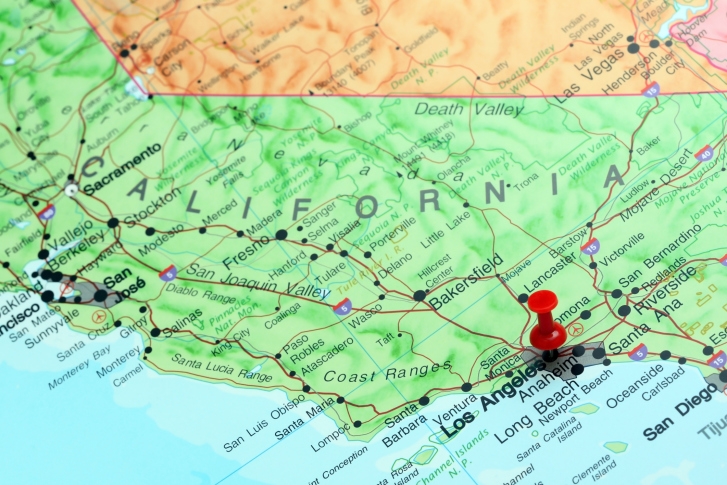Advertisement
$58 Million Mortgage Fraud Scheme Busted on Long Island

Preet Bharara, the United States Attorney for the Southern District of New York, and Janice Fedarcyk, Assistant Director in Charge of the New York Office of the Federal Bureau of Investigation (FBI), has announced the filing of a five-count indictment charging Gerard Canino, Ian Katz, Omar Guzman, James Vignola, Henry Richards, Robert Thornton, Neal Sultzer, Michael Raphan, Michael Schlussel, Jacquelyn Todaro, Kevin Hymowitz, Michael Charles, Ralph Delgiorno and Pandora Bacon in connection with their roles in a mortgage fraud scheme involving over 100 home mortgage loans valued at more than $58 million on residential properties in the New York City area, Westchester County, Dutchess County and on Long Island. The loans were made through the mortgage brokerage firm First Class Equities (FCE) of Long Island. Among those charged are Canino, the president and owner of FCE; five loan officers (Katz, Guzman, Vignola, Richards and Thornton); and four attorneys and one disbarred lawyer (Sultzer, Raphan, Todaro, Hymowitz and Schlussel). Many of the properties involved in these transactions are now in default or foreclosure.
“As alleged, this brazen and wide-ranging scheme defrauded banks and lenders of millions and enriched its participants, including real estate professionals who took advantage of their inside knowledge of the system to fleece it," said Bharara. "Mortgage fraud undermines the banking system and hurts hardworking homeowners, and we will continue to work with the FBI to make sure that those who commit such crimes are caught and prosecuted.”
From 2004 to 2009, First Class Equities, headed by Canino, engaged in a massive mortgage fraud scheme at the direction of Canino and others from its offices in Oceanside, N.Y. and Old Westbury, N.Y. Canino’s co-conspirators in the scheme included, among others, the FCE loan officers Katz, Guzman, Vignola, Richards and Thornton, the real estate attorneys Sultzer, Raphan, Schlussel, Todaro and Hymowitz, the real estate title closer Charles, and other individuals, including Delgiorno and Bacon. As part of the scheme, the co-conspirators arranged home sales between straw buyers—persons who posed as homebuyers, but who had no intention of living in, or paying for, the mortgaged properties—and homeowners, often people in financial distress, who were willing to sell their homes. Canino, Katz, Guzman, Vignola, Richards, Todaro, Hymowitz and others recruited straw buyers, many of whom were paid by the defendants. In particular, Delgiorno was paid approximately $300,000 by certain members of the conspiracy to act as a straw buyer to obtain at least 10 mortgages within a short period of time in 2006.
The FCE loan officers obtained mortgage loans for the sham deals by submitting fraudulent applications to banks and lenders, and using fraudulent representations about the straw buyers’ net worth, employment, income, and plans to live in the properties. In support of the loan applications, Thornton created false documents, including fake W-2s and pay stubs. In addition, Guzman and Bacon provided false verifications of employment to various lenders, falsely claiming to employ some of the straw buyers.
After approving the loans, the lenders sent the mortgage proceeds to their attorneys, including Sultzer, Raphan, Todaro, Hymowitz and another attorney, on whose behalf Schlussel appeared at real estate closings and distributed loan proceeds. Schlussel held himself out as an attorney, but in fact, had previously been disbarred and was not licensed to practice law. He and the other attorney defendants submitted false statements to the lenders about how they were distributing the loan proceeds, and made huge illicit payments, typically totaling tens of thousands of dollars or more per transaction, from the loan proceeds to members of the conspiracy, including each other.
In addition, Todaro and Schlussel caused false documents to be provided to lenders in order to obtain home equity lines of credit, or second mortgages, on properties purchased through straw buyers the same day, the proceeds of which Todaro distributed among certain members of the conspiracy. At closings, Charles authorized the transfer of title in many of the fraudulent deals, omitted certain documents that were otherwise required to be provided by him, and improperly notarized documents to further the fraud.
Some members of the conspiracy funneled fraud proceeds through shell corporations, which they owned and controlled, and periodically also used these shells to quickly resell, or “flip,” properties to other straw purchasers at higher prices in order to obtain new mortgages on the same property, restarting the fraudulent scheme. As a result of the fraud, scores of mortgages went into default and many of the properties went into foreclosure.
About the author





